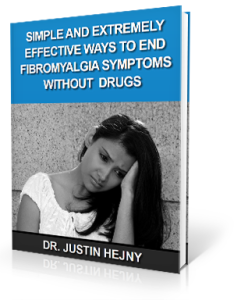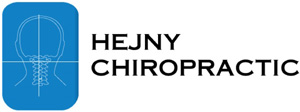 Fibromyalgia (FM) is a chronic disorder that causes pain in your bones and muscles and affects the whole body. With fibromyalgia, you will feel tenderness in your muscles and extreme exhaustion. Even more frustrating, these symptoms do not have a clear cause, which makes fibromyalgia hard to diagnose or treat.
Fibromyalgia (FM) is a chronic disorder that causes pain in your bones and muscles and affects the whole body. With fibromyalgia, you will feel tenderness in your muscles and extreme exhaustion. Even more frustrating, these symptoms do not have a clear cause, which makes fibromyalgia hard to diagnose or treat.
Since fibromyalgia is a condition that cannot be confirmed by diagnostic tests, some doctors do not recognize it as a real condition, which often leads to a misdiagnosis. This also increases the chances of a sufferer developing depression because of the lack of proper diagnosis and relief care.
Doctors are concerned that people who have chronic fatigue will unnecessarily seek prescriptions for pain medications, and that pain medications are not a long-term solution. As a Minnesota chiropractor for fibromyalgia, I recommend certain lifestyle changes to help you in effectively dealing with chronic fatigue.
Table of Contents
Symptoms of Fibromyalgia
In fibromyalgia, there are specific tender points or trigger points on your body that may experience persistent pain when touched even gently. These points were previously used to diagnose the condition, but now they are just used to narrow down the possible diagnosis. Along with other symptoms and medical tests, there are things that help determine if you have fibromyalgia.
To identify if what you are experiencing is fibromyalgia, the pain should exist like a constant dull ache in multiple areas of your body for at least three months. Other symptoms accompanying this may include the following:
- Headaches
- Extreme exhaustion
- Sleep problems, such as decreased sleep time or waking up feeling unrefreshed
- Inability to focus
- Lower abdominal pain
- Anxiety
These symptoms result from the overreaction of the brain to pain signals, which could be caused by a chemical imbalance.
The pain is described as dull and usually affects the joints, muscles, and tendons all over the body. It becomes worse during strenuous exercise or physical activity. It can also be a throbbing, burning, or shooting pain followed by numbness, stiffness, and a tingling sensation in the limbs. Symptoms are worse in frequently used muscles such as those of the hands, feet, and legs. For some people, they feel the most severe pain first thing in the morning, get gradually better during the day, but get worse again at night.
To learn more about the connection between head and neck injuries and fibromyalgia, download our free e-book by clicking the image below.
Fibromyalgia Tender Points
As previously mentioned, certain tender points in the body are the most sensitive to touch. Someone may feel fibromyalgia pain even from the lightest pressure. Pain can also be felt in areas far away from these points. There are nine areas in the body associated with FM:
- Both sides of the back of the head
- Both sides of the neck
- The top of each shoulder
- Shoulder blades
- The outside of each elbow
- Both sides of the upper chest
- Buttocks
- Both sides of the hips
- Insides of both knees
There is also what you call a “fibro fog” that makes it difficult for a person with fibromyalgia to concentrate and remember information as well as completely take in conversations. This is a big inconvenience for work and daily life, in addition to the extreme fatigue associated with the condition.
Heart Disease and Fibromyalgia
Research in Taiwan shows that people who have fibromyalgia have a higher risk of developing heart disease. It is said to be from genetics or other health problems brought about by FM. No further research has been done yet. Researchers found the correlation but have not determined the cause of the correlation.
More women have fibromyalgia than men, and they exhibit different symptoms of heart disease. This may be contributing to the undiagnosed heart conditions in women. Fibromyalgia is a condition not entirely known to the scientific world yet, so other conditions associated with it are still often undetected.
Another separate study shows that people with fibromyalgia have a higher risk for stroke. This relationship between stroke and fibromyalgia is surprisingly more evident on younger people than older people.
Some theories could explain this phenomenon. For instance, when you feel down, you don’t have any energy or motivation to exercise, which could lead to weight gain. This, in turn, raises your blood pressure and cholesterol, which increases inflammation. To improve your heart condition when suffering from fibromyalgia, use the following tips:
- Have a regular sleep pattern/routine
- Reduce your stress
- Do some light exercise daily
- Receive massage therapy
- Care for your mental health
The Use of Upper Cervical Care in Fibromyalgia Relief
Several studies have shown the link between the onset and symptoms of fibromyalgia and the misalignment of the bones of the upper cervical spine. This is due to the stress put on the brainstem when there is a misalignment in the C1 or C2 vertebra. It can send false signals to the brain regarding pain, which causes chronic fatigue.
In our clinic, we use a gentle method in realigning the bones of the neck. It realigns the bones naturally without popping or cracking the spine. A lot of our patients have reported an improvement with their symptoms after receiving the relief care. You may visit us here at Hejny Chiropractic in Spring Lake Park, Minnesota to discover more about upper cervical chiropractic.
To schedule a complimentary consultation with Dr. Hejny, call our Spring Lake Park office at 763-230-0116. You can also click the button below.
 If you are outside of the local area, you can find an Upper Cervical Doctor near you at www.uppercervicalawareness.com.
If you are outside of the local area, you can find an Upper Cervical Doctor near you at www.uppercervicalawareness.com.
